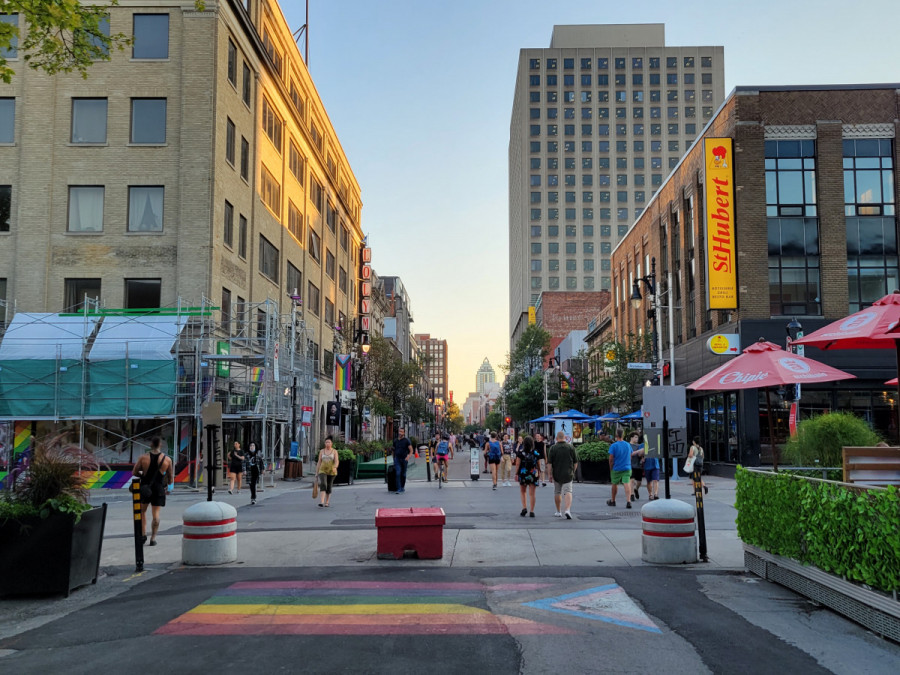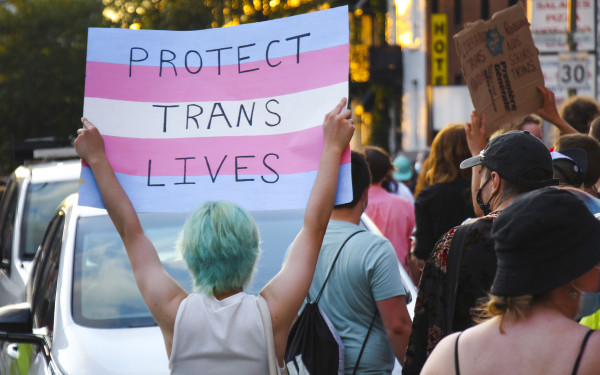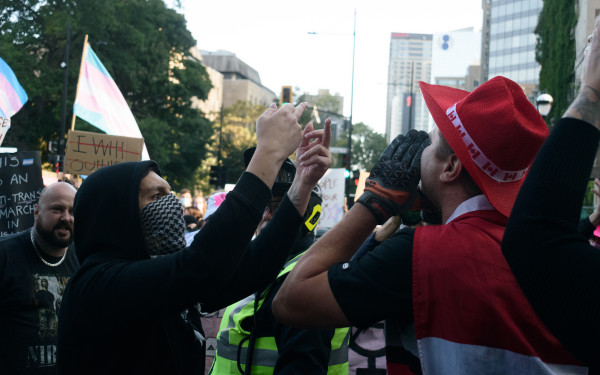Research finds young LGBTQ+ Montrealers shifting away from the Gay Village
Analyzing the past and future of Montreal’s most iconic LGBTQ+ space
A generational shift away from Montreal’s Gay Village and towards alternative Queer spaces within the city’s LGBTQ+ community has been detected.
Julie Podmore, an affiliate assistant professor of geography, planning and environment at Concordia University, has uncovered this shift in “Far Beyond the Gay Village: LGBTQ Urbanism and Generation in Montréal’s Mile End”.
Conducted in 2013, Podmore’s research recently appeared in a chapter she wrote for the book The Life and Afterlife of Gay Neighborhoods: Renaissance and Resurgence (edited by Alex Bitterman and Daniel Baldwin Hess). The process involved interviewing younger LGBTQ+ Montrealers who migrated from the Village to places like the Mile End.
Participants noted several common reasons for their abandonment of the Village. Principle among these was the perception that the Village had become a commercialized and homonormative space designed for white cis gay men. Overall, many participants preferred frequenting areas like the Mile End, where more fluid definitions of gender identity and sexuality were widely accepted.
Podmore explained that such perceptions are likely reactions to the process of mainstreaming that has altered the Village over time. Gentrification and developing the Village as a tourist destination has pushed out many queer elements and spaces save for those dedicated to cis gay white men.
For instance, rising rents resulted in the closure of famed lesbian bar Le Drugstore in 2013. The Bourbon Complex, an entertainment centre long seen as central to the Village’s nightlife, closed less than a year later in 2014 for the same reason.
Podmore added that homonormativity and commercialization in the Village were not always the norm.
“I would say that the Village was made by cis men for sure. It was a gay space.” Podmore said. “But in the ‘90s, all over the western world we start to see gay villages start to diversify.”
According to Podmore, this period saw the introduction of lesbians and other queer groups into the Village. A development that coincided with the emergence of a more unified LGBTQ+ identity among said groups.
“My generation of queers was kind of a combination of trans, gays, and lesbians that saw themselves as one community in a way, and the Village was their meeting place,” she added.
The forces of commercialization that have grown over the past few decades eroded this strong sense of community that initially made the Village a haven for such a wide variety of groups.
“At night, I am more likely to be identified as a gay man in drag than as a trans woman, so that also makes me feel very uncomfortable.”
“All of those forces really transformed the Village,”Podmore added. “ All of the lesbian bars that were there, not that there were ever a lot, got displaced eventually. The mainstreaming process kind of erases that specificity.” .
The founder of FEMTL– -a community space for trans women and transfeminine people in Montreal– has also observed this generational shift away from the Village.
“I spend a lot of time talking to trans people, mostly aged between 20 and 35, and none of them feel represented by the Gay Village” she said.
The founder said she noticed a stark difference between how she was treated in the Village before and after her own transition. She noted that while some exist in the Village, the vast majority of venues and events are not inclusive of cis/trans women or non-binary people.
“Now that I’ve transitioned and live openly as a woman, there doesn’t seem to be any space for me in the village,” she added. “Worse, at night, I am more likely to be identified as a gay man in drag than as a trans woman, so that also makes me feel very uncomfortable.”
Elise, a trans women who has frequented the Village, explained that it remains less inclusive of the Trans Community than alternative spaces such as the Plateau or Maisonneuve.
“The entire purpose of the Village seems outdated to me. Not because we’re over LGBTQ+-phobia in Quebec as some white gay men will tell you, but because I and other trans women can lead normal lives in most of the city.” they said. “The Village feels pretty unsafe for me to be in, so it’s a bit paradoxical to even consider it an inclusive space.”
An anonymous source told The Link that they felt excluded from the Village despite belonging to the Asexual community.
“The Village is heavily geared towards the G in LGBTQ+” they said. “All of the shops with barely clothed men in suggestive poses on display look weird to me, borderline tacky even. I don’t feel the Gay Village is a place where I am welcomed, or where I feel I belong.”
Village Montréal is a commercial development corporation that represents the majority of the Village’s businesses and artistic programming. It released a manifesto last October detailing its plans to make the Village a more inclusive environment for all members of the LGBTQ+ community.
Efforts outlined in the manifesto include dropping the word “gay” from the Village’s official name, and initiating training porgrams designed to educate the employees businesses in the Village on inclusivity and anti-racist/anti-homophobic, biphobic and transphobic attitudes.
Olivier Lapierre, media relations consultant for Village Montréal said that plans to implement training policies have been hindered by the pandemic and financial hardships.
“We did offer a lot of training sessions to our members, but the priority was towards economic recovery efforts and actions,” Lapierre said. “When labor stabilizes and businesses are doing better, we will be able to launch this specific training effort.”
According to Podmore, investing in social and community services could revitalize the neighbourhood’s relationship with LGBTQ+ Montrealers.
“I think [such investments] might make [the Village] much more attractive to a wider diversity of LGBTQ+ people and make it a more meaningful place,” she said.. If there's nothing gay specific, if there's no reason for LGBTQ+ people to gather there, then the chances of it having an identity as a queer space are not very likely.”


_600_832_s.png)


_600_375_90_s_c1.jpg)
_600_375_90_s_c1.jpg)
